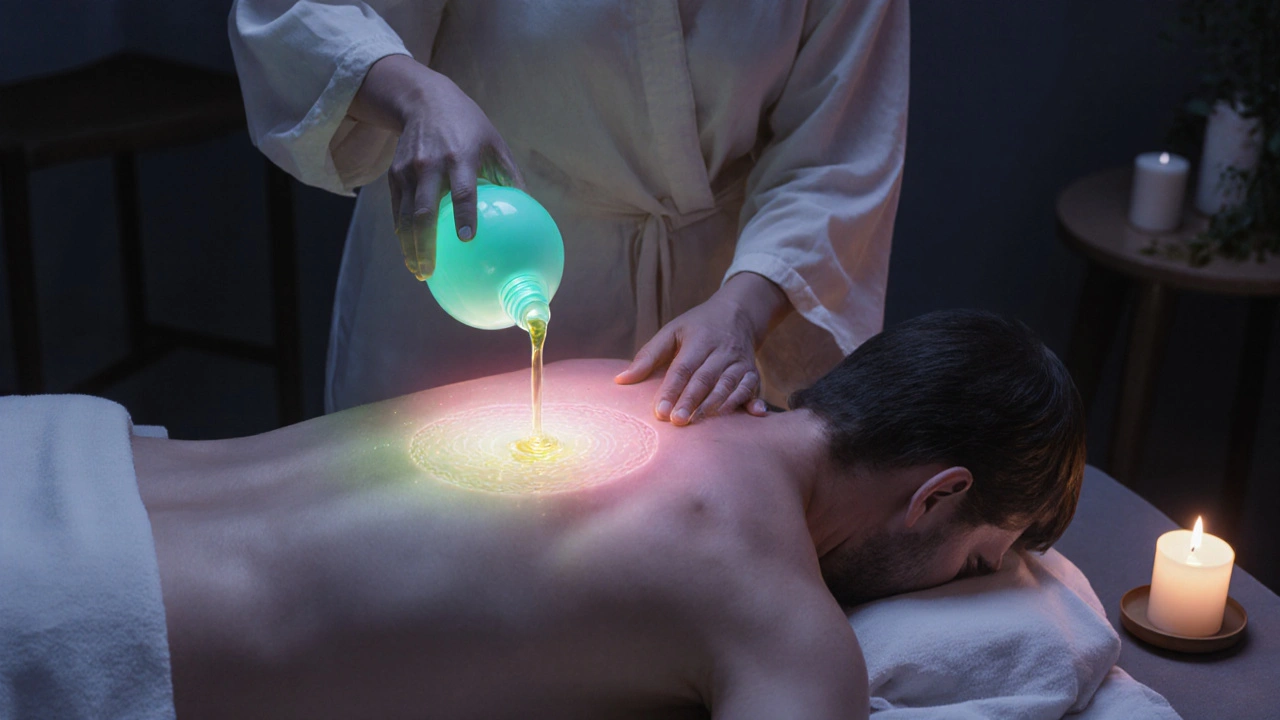Emotional Release Preparation Checklist
Prepare for Your Session
This interactive checklist helps you prepare for the emotional release that often occurs during tantric massage sessions. Check each item as you complete it to ensure you're ready for your session.
Reduces external stressors, helps you stay present
Maintains energy without heaviness
Activates parasympathetic system
Guides chakra focus
Facilitates easy undressing
Enhances tactile relaxation
Allows integration of emotions
When you book a tantric massage is a holistic practice that blends physical touch, breath, and energy work to unlock deep emotions. If you’re curious about the powerful “emotional release” that many clients describe, the difference between a relaxing body rub and a true inner breakthrough often comes down to how you prepare.
What Emotional Release Really Means
In tantric circles the term “de‑armouring” describes the process of shedding layers of held tension, grief, or fear that are stored in the body’s fascia and energy fields. During the session you may experience tears, laughter, or a sudden wave of warmth. This isn’t drama-it’s the nervous system finally letting go of stuck patterns. Studies of breath‑based bodywork (2023) show that focused diaphragmatic breathing can trigger the parasympathetic response, creating a safe corridor for those emotions to surface.
Setting the Stage: Your Physical Space
Before you step into the therapy room, carve out a quiet, uncluttered space at home for pre‑ and post‑session rituals. Think soft lighting, a few candles, and a playlist of ambient tones without sudden spikes. A calm environment reduces cortisol, making it easier for the mind to stay present.
- Turn off phone notifications at least 30minutes before the appointment.
- Use a diffuser with a mild essential oil (lavender or frankincense) at a low concentration.
- Keep a blanket or soft robe handy for after the massage.
These small adjustments signal to your brain that the time is dedicated to safety and self‑care.
Preparing Your Body: Light Meals and Hydration
Eating a heavy meal right before a session can make you feel sluggish and may cause discomfort when lying prone. Opt for a light snack-perhaps a banana, a handful of nuts, or a small yogurt-about an hour before. Hydration is equally important; sip water throughout the day so your tissues stay supple.
Breathwork: The Bridge to Emotion
One of the most reliable tools for unlocking emotional flow is intentional breathing. A simple 4‑7‑8 pattern (inhale 4seconds, hold 7, exhale 8) activates the vagus nerve, softening the fight‑or‑flight response. Practicing this for 5‑10 minutes before your appointment builds a rhythm that your body will carry into the massage.
When you arrive, the therapist will often guide you through a few rounds of diaphragmatic breaths. This collaboration ensures that your nervous system is already primed for release.

Understanding Chakra and Energy Flow
Tantric work frequently references the seven main chakras. Each chakra corresponds to specific emotional themes-root (security), sacral (creativity), heart (love), and so on. A therapist may focus on “opening” the heart chakra to help you access buried affection or grief. Knowing this map lets you set an intention, such as “I want to feel more love for myself,” which guides the session’s energy direction.
Choosing the Right Therapist
A skilled therapist does more than apply oil. They create a container of trust, ask about any physical limitations, and clarify emotional goals. Look for practitioners who mention training in emotional guidance or psychotherapeutic techniques, as they are better equipped to navigate intense releases.
Before booking, ask these quick questions:
- Do you incorporate breathwork or mantra during the session?
- How do you handle a client who becomes tearful or overwhelmed?
- What is your policy on after‑care and integration?
Massage Oils and Temperature
Warmed massage oil adds a soothing tactile layer that encourages the skin’s receptors to relax. Popular choices are jojoba, almond, or a blend with a few drops of sandalwood essential oil. Ask the therapist to heat the oil to body temperature (about 35°C) so there’s no sudden cold shock that could trigger a stress response.
Integrating the Experience Afterwards
Emotional release doesn’t end when the table is rolled away. Give yourself at least 30minutes of quiet time to journal, drink water, and notice any lingering sensations. Some clients find gentle stretching or a short walk in nature helpful. If strong emotions surface days later, reach out to your therapist-many offer follow‑up calls for integration support.

Quick Preparation Checklist
| Task | Why It Helps | Tips |
|---|---|---|
| Turn off phone alerts | Reduces external stressors | Use "Do Not Disturb" mode 30min prior |
| Light snack & hydrate | Maintains energy without heaviness | Banana, nuts, 500ml water |
| 5‑minute 4‑7‑8 breathwork | Activates parasympathetic system | Sit upright, place hand on belly |
| Set a clear intention | Guides chakra focus | Write a one‑sentence goal |
| Choose comfortable clothing | Facilitates easy undressing | Loose cotton or a soft robe |
| Warm oil preparation | d>Enhances tactile relaxationHeat oil for 2-3minutes in hands | |
| Post‑session quiet time | Allows integration of emotions | Journal or sip tea for 30min |
Common Concerns and How to Address Them
What if I start crying? Crying is a natural release valve. Let the therapist know you’re okay with it; they’ll adjust pressure or pause while you breathe.
Will I feel “weird” the next day? Some people report a lingering sense of lightness, while others feel a gentle ache as muscles reset. Both are normal; staying hydrated speeds recovery.
Can I do this alone? Self‑massage and breathwork can trigger minor releases, but deep emotional work benefits from a trained guide who can read subtle cues and keep the space safe.
Looking Ahead: Evolving Practices
Recent trends (2023) show more therapists blending tantric techniques with modern psychotherapy, creating a structured “integration protocol” that includes follow‑up sessions, mindfulness homework, and even online support groups. As the field matures, the emphasis on emotional safety and clear after‑care will only grow, making it easier for newcomers to feel confident about the process.
Frequently Asked Questions
Do I need prior experience with tantra to have an emotional release?
No. A beginner can still experience powerful release, as long as the therapist creates a safe container and you approach the session with openness.
How long should a tantric massage be for a full emotional journey?
Most practitioners recommend at least two hours. This gives enough time for initial relaxation, deep work, and post‑session integration.
What if I feel unsafe during the session?
Speak up immediately. A professional therapist will pause, adjust pressure, or stop entirely. Clear communication is a core part of the practice.
Can I combine tantric massage with other therapies?
Yes. Many people pair it with yoga, breathwork classes, or psychotherapy. Just inform both providers so they can coordinate care.
What should I do the day after the session?
Stay hydrated, avoid heavy caffeine or alcohol, and give yourself gentle movement or a quiet walk. Journaling any thoughts or sensations helps cement the benefits.






